Thanks to Brio for partnering with us and offering Primer readers a free Zero Blade attachment ($25) with their Beardscape purchase.
Shaving and taking care of facial hair is a lot like doing our taxes: It's one of those things we have to do but we're never really educated on how to do it. Some of us might have been lucky to get some preliminary instructions from a father figure, but even then, if your facial hair growth or style is any different from his, you've had to figure it out for yourself.
What on the surface seems like it should be simple – hair on face too long, make shorter – actually has quite a bit of nuance.
1. Don’t Trust Your Bathroom Lighting Alone
Take my word for it: If you do all your grooming in the same bathroom, in front of the same mirror, with the same lighting every day, you may not be getting the full picture.
About 10 years ago, I was chilling with one of my closest friends at home and he politely told me I had a hair growing out the side of my nose, coincidentally (and perfectly timed) with our conversation about our frustrations with the LA dating scene. Not out of my nose – out the side of my nose. I went to the bathroom, and even doing that thing where I’m inches from the mirror, I couldn’t see what the heck he was talking about.

I pulled out my cell phone flash light and moved it across my face, and sure enough, there it was, a hair that must have been a third of an inch long just straight up growing out the side of my nose. Its length made clear it had been there for some time and I could never see it because it just happened to fall in this awkward blind spot that my bathroom set up caused.
To get a better picture of what’s going on, especially for potentially embarrassing things you’d prefer to avoid like nose and ear hair, but also for catching beard strays, occasionally give your face a sweep with lighting that breaks up your normal perspective.
2. Achieve a Naturally Rounded Upper Cheek Line by Pulling Your Cheek Up Then Shave a Straight Line

Your face isn’t flat, and neither should the top of your cheek line. An upper beard cheek line that has a natural contour allows you to neaten up your facial hair appearance without looking like you just squared off the bushes with a hedge trimmer. The trick to cleaning up your cheeks while giving it a natural look lies in a simple but effective technique:
- Start by pulling the skin of your cheek upward
- Then, with your skin still taut, shave or trim in a straight line where you want your cheek line to be.
- The magic happens when you release your skin; the straight line you've just created will naturally adopt a slightly rounded appearance that follows the natural shape of your face.

This method does more than just create a visually pleasing line; it also helps in defining the cheekbones and framing your face in a way that enhances your facial structure.
3. Cut Into Your Mustache, Don’t Cut It Straight Across

While much of facial hair grooming comes down to improving presentation, trimming the ends of your mustache hairs is a more practical, “GET OUT OF MY MOUTH” operation.
It’s easy to think of it the same way you do your sideburns or the way the barber trims the bottom of your hair on your neck: Straight across with the trimmer.

But for a more natural edge, treat the mustache more like bangs instead, and cut into the ends of the hairs with your trimmer or scissors to reduce length in a more organic way instead of giving your ‘stache the equivalent of a bowl cut.
4. My Preferred Easy Clean Up Technique
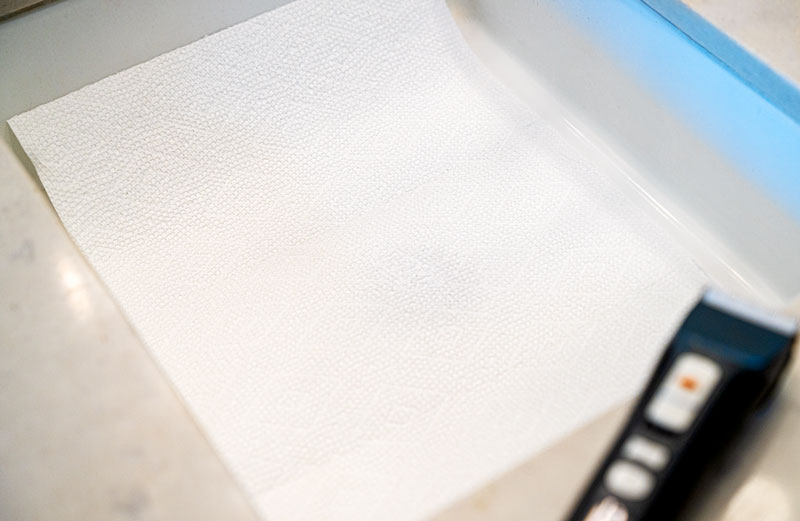
The clean up is one of the most annoying parts of shaving and trimming. Whether you're living with a partner, roommates, or simply cherish a clean bathroom like an adult, those tiny hairs seem to have a talent for finding their way into every nook and cranny, clinging stubbornly to sinks and countertops.
One thing I’ve found that makes things easier when using a trimmer is to place a damp paper towel in the bottom of the sink. The wet surface acts like a magnet for facial hair clippings, making them stick to the towel rather than flying off into the unknown.
There are also dedicated sink covers for those inclined, but they seem kind of expensive for what are essentially the same as toilet seat covers. For men with routines dealing with a lot more density, a dedicated product like the various beard bibs available, while looking silly, offer a larger and reusable solution.
Invest in Quality Tools Because That's What They Are
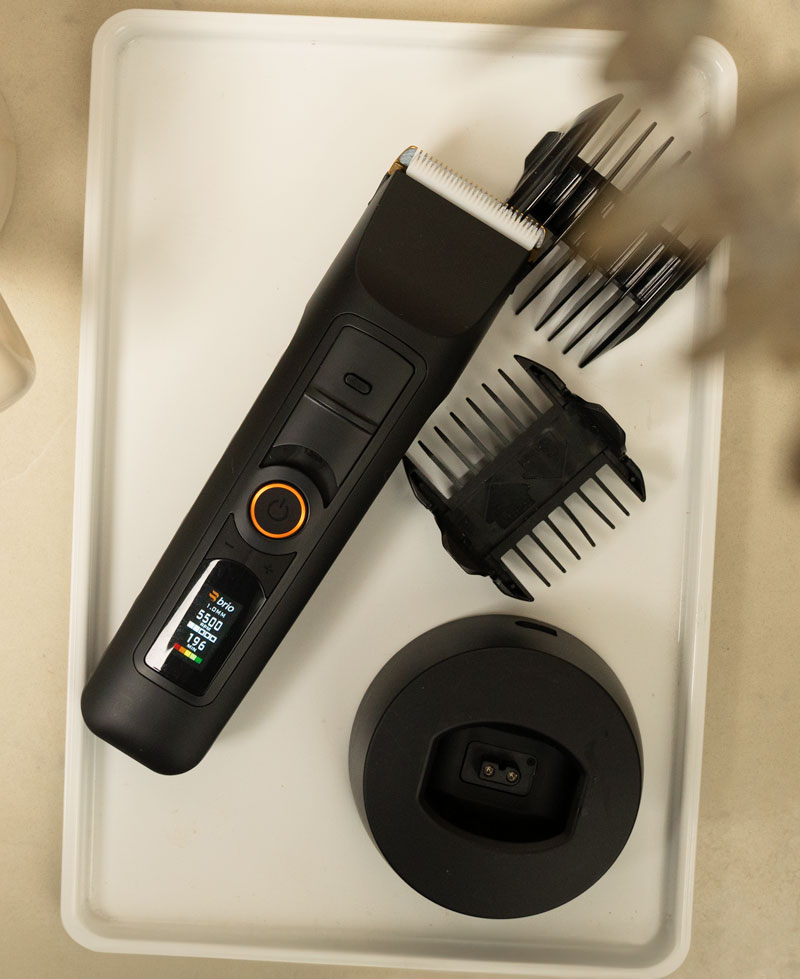
When it comes to what really matters in a trimmer, there are a few non-negotiables: it needs enough power to glide through your hair without snagging and pulling, blades sharp enough to minimize the number of passes you have to make, construction that prevents it from getting too hot on your face and in your hand, and perhaps most crucially, a battery that won't betray you by dying halfway through a trim, which always seems to be right before a big event.
Frustratingly, just about any trimmer you come across locally isn't going to have any of that.
Ceramic blades, like those on the Beardscape V2, are a rarity in the world of trimmers, where metal blades are standard. The advantage of ceramic over metal is significant: they stay sharper for longer, resist heat build-up, and are quieter during operation.
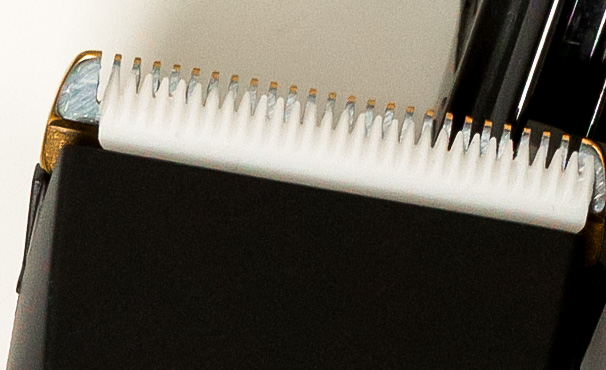
This is in stark contrast to the more common metal blades, which can dull quicker, get uncomfortably hot with prolonged use, and often create more noise. The use of ceramic blades in the Beardscape V2 ensures a trimming experience that is not only more comfortable but also more efficient, reducing the need for multiple passes over the same area and thereby lessening the risk of skin irritation.
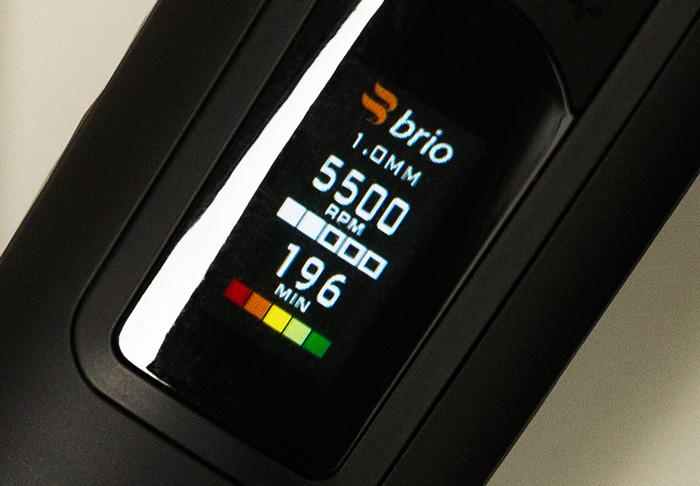
Buying a trimmer comes down to investing in a tool that you can rely on for years, and the Beardscape V2 is precisely that. It's what you upgrade to when you're tired of burning through plastic-y, off-the-shelf trimmers that share the same motor as the electric toothbrush in the next aisle and instead are ready for a serious tool designed with longevity and performance in mind. Its unique features set it apart from the more commonly available trimmers that might offer a lower upfront cost but fall short in durability and efficiency. The Beardscape V2 is a tool that not only meets your grooming needs today but continues to perform for years to come.
Brio is offering Primer readers a free Zero Blade attachment worth $25 with the purchase of a Bearscape.
5. Nail Where Your Beard Hair Should Stop On Your Neck Every Time With This Guide
More so than how to grow facial hair, or choosing which style to go with, or what products to use, it seems like the absolute one thing most men are never taught and is not inherently obvious is: Where on your neck should your beard or scruff stop?
Go too low and you start looking like a werewolf. Go too high and you run the risk of drawing attention to the underside of your chin, like this TV show poster I came across in the grocery store:

Left: A beard shaved too high on the neck Right: Photoshopped to show how leaving the hair on your chin draws the eye up
Here’s an easy guide to get it right:
- Your facial hair should not extend passed or below the back corner of your jaw. The hair should wrap around the corner, but not extend further.
- From there, use your comb (or eyeball it if you’re adventurous) to visualize a line from the corner of your jaw to just above your Adam’s apple.

Adjusting the line slightly based on your facial structure can further optimize your beard's appearance. For those with rounder faces, a slightly higher line can elongate the face, while individuals with longer faces might benefit from a lower line to add fullness.
For men who lack a defined separation between their jaw line and their neck, my recommendation would be to follow the same guide but taper the hair below the jaw line to create the illusion of contour.
The key is to ensure that the end point complements your natural features, rather than adhering rigidly to a one-size-fits-all approach.
6. You Need to Disinfect Your Shavers and Other Shaving Tools Regularly
Keeping your shavers, trimmers, and razors clean isn’t just for professionals and the OCD among us: It’s a critical part of avoiding skin irritations and infections. Every time you shave or trim, your tools come into contact with bacteria that can proliferate if left unchecked.
A simple and effective method is to use isopropyl alcohol. After each use, take a moment to wipe down your razors or trimmer blades and any other non-electric parts with a cloth dampened with alcohol. This kills off bacteria and keeps your tools in ready condition. For electric trimmers, refer to the manufacturer's instructions for safe cleaning practices, as direct application of liquids can damage some models.

→ Pro-tip: Put your solution in a small mister bottle so that cleaning is a breeze
For guys with a clean shave, using isopropyl alcohol on the blades can sanitize and help displace water. Replace razor cartridges or blades often – at least every 5-7 shaves for most men. Dull blades are harder to keep bacteria-free.
7. Different Shaving & Grooming Tools Have Different Purposes
Whether it's sticking with what his father used or grabbing whatever was available when he first needed one, it's easy for a guy to just kind of fall into using a specific grooming tool, not realizing that some work better for certain men than others.
It should be based on the type and style of your facial hair – as well as your preference for an experience or convenience.

Electric Rotary Shaver:
- Best for close shaves cutting through curly or thicker facial hair
- Technique: circular, rotating motions
- Direction: small circles across the face to catch and cut hairs growing in various directions
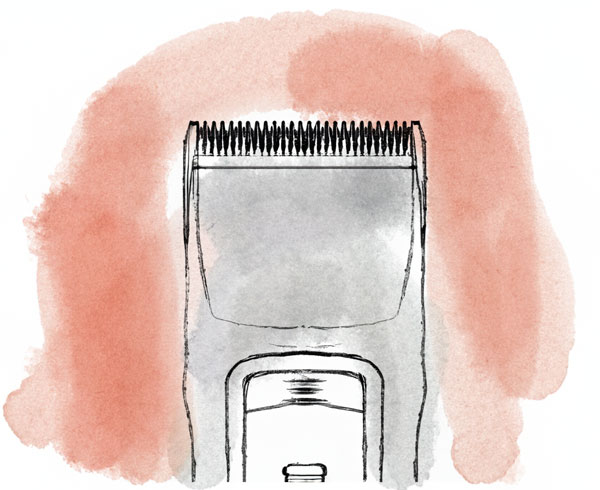
Beard Trimmer:
- Best for trimming various lengths of facial hair from stubble to beard maintenance
- Technique: use with or without guards for desired length
- Direction: lightly go against the grain

Safety Razor:
- Best for a close and precise shave
- Technique: use short, straight strokes
- Direction: with the grain of the hair growth

Straight Razor:
- Best for experienced users seeking a close shave
- Technique: careful, smooth strokes
- Direction: holding the razor edge at a 30 degree angle to your skin and going with the grain on the first pass, optional across or against the grain on subsequent passes

Cartridge Razor:
- Best for convenience and quick shaves
- Technique: light pressure with longer, steady strokes
- Direction: with the grain for the first pass, optional across or against the grain for closer shaves
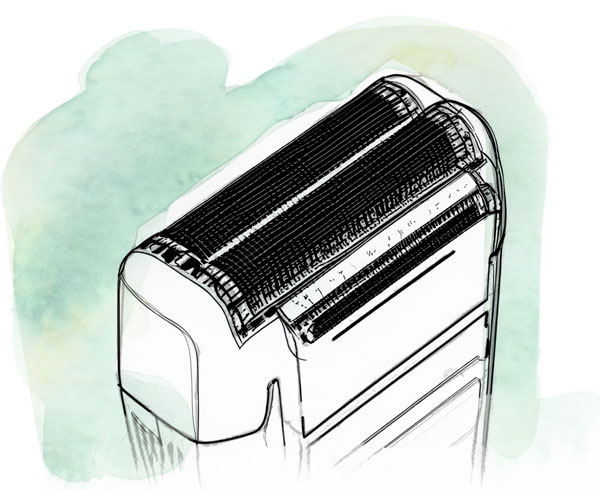
Electric Foil Shaver:
- Best for clean shaves with less skin irritation
- Technique: long, straight strokes
- Direction: over the face in the direction of hair growth
8. Wash Your Face Before Trimming or Shaving to Lessen The Chance of Acne, Ingrown Hairs, etc.
There’s a reason nurses wash the surface of the skin before a surgeon gets started with the scalpel: The skin is home to plenty of things that can cause problems if they get inside an incision.
When you shave or trim without first cleansing, you're not just cutting hair. You're potentially dragging bacteria across your skin, inviting it into tiny nicks or inflamed pores, which can lead to acne, ingrown hairs, or worse. A pre-grooming wash with warm water and a gentle cleanser does more than just rinse away these bacteria; it also softens your facial hair and opens your pores, setting the stage for a smoother, cleaner cut.
Just because we’re not trying to cut our selves when shaving and trimming doesn’t mean it’s not an inherent fact of facial hair maintenance.
9. Don't Endlessly Cut Flyaways, Use Hairspray on a Comb
Before you frustratingly take scissors to that lone beard hair that insists on going its own way, no matter how much you brush it, there's a simple yet effective trick that can bring them into line: using hairspray on a comb.
Spritz a fine-toothed comb with whatever hairspray you have around, not directly onto your beard. This allows for a more controlled application, ensuring you don't end up with a stiff or sticky beard. Then, gently run the comb through your beard, focusing on the areas with flyaways. The hairspray helps hold the hair in place without weighing it down, without having to constantly deal with the now shorter fly away as it grows back.
What are your shaving, grooming, and facial hair tips you had to figure out the hard way? Keep the list going in the comments.
→ Primer readers get a free Zero Blade attachment when they order a Beardscape 2! Thanks to Brio for supporting Primer's mission.
















